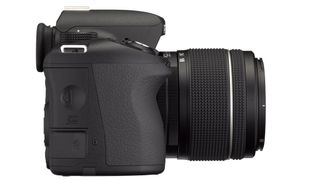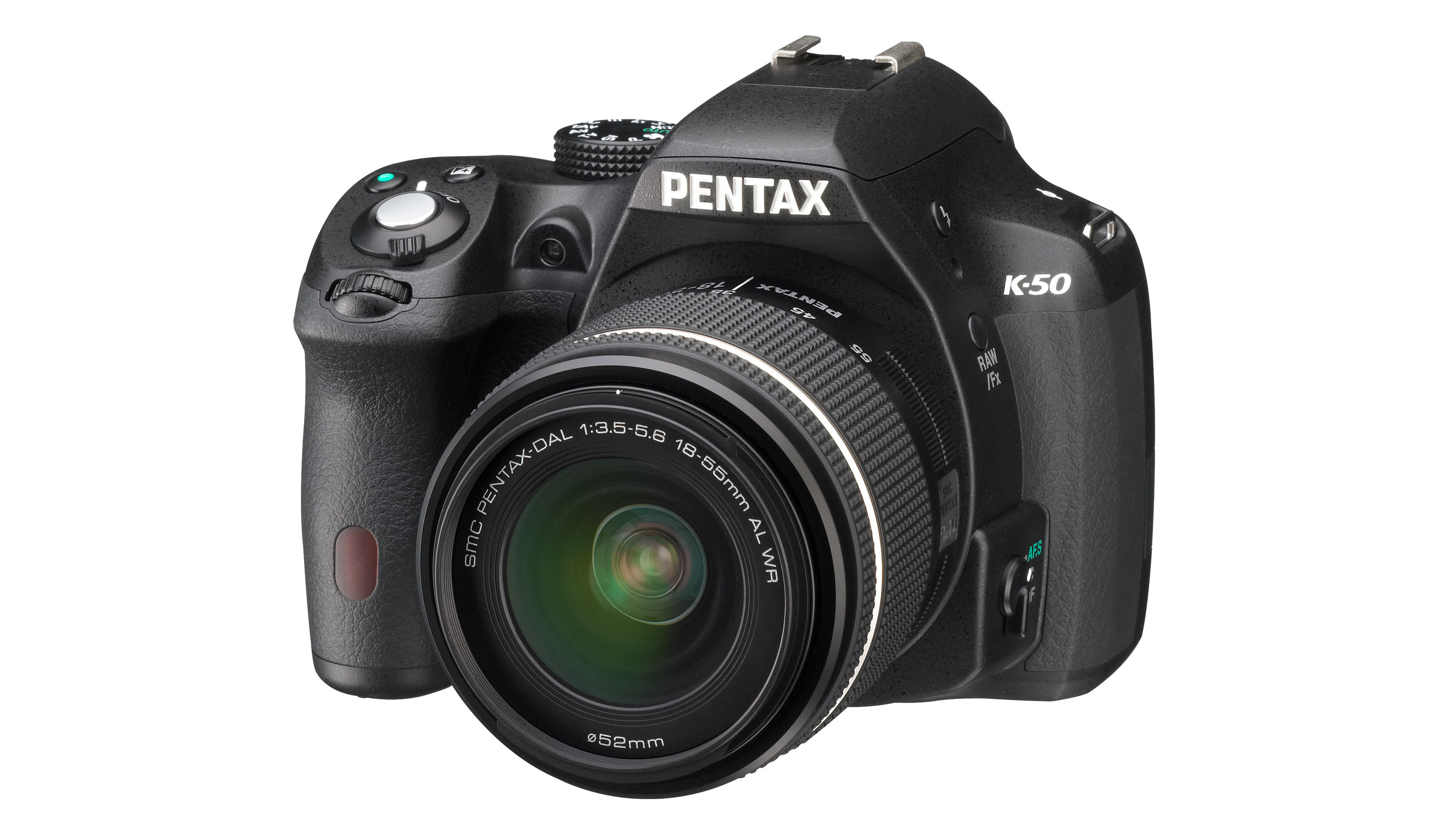TechRadar Verdict
The best thing about this camera is its weatherproofing credentials, so to get the most of it, partner it with the 18-135mm f/3.5-5.6 WR (weather resistant) optic.
Pros
- +
Weatherproof
- +
100% field of view viewfinder
- +
6fps shooting
Cons
- -
Fixed screen
- -
Noisy operation
- -
No Wi-Fi
Why you can trust TechRadar
Despite being one of the oldest brands in the photography world, Pentax struggles against the big names of Canon and Nikon to lure in those all important entry level customers.
Although cameras at this end of the market are much cheaper than the pro gear that sits at the top, snagging somebody at this point in the buying cycle usually means you have a loyal customer for quite some time – especially if they start to invest in accessories such as lenses.
Since Pentax was taken over by Ricoh, release schedules have sped up a little to compete with the faster churn, at least at this end of the market, of the equivalent Nikon and Canon models.
The K-50 was announced in June 2013, at the same time as the K-500. It shares many of the features as the K-30, including the same 16-million pixel APS-C size sensor. Despite the similarities between these two cameras, Pentax says that the two cameras will both continue in the line-up.
The sensor is pretty special, as it features Pentax's Shake Reduction system, which works with pretty much all Pentax lenses. When the system is activated, the sensor can automatically rotate by up to one degree to correct problems with sloping horizons in compositions. To help further with that there's also a digital level display option for both the viewfinder and the LCD screen.

As with the K-30, the K-50 uses the new SAFOX IXi+ AF module which has 11 AF points, of which nine are cross-type.
Several of the other features of the camera outdo the Nikon and Canon equivalents, on paper at least. For starters, there's high-speed continuous shooting at around six frames per second, while high-sensitivity shooting can reach ISO 51200 (which is also an improvement from the K-30)
Another improvement the K-50 offers is an improved Prime M image processor, which should help with that high sensitivity shooting.
The ability to shoot in raw format is offered, and one useful thing about Pentax cameras is that its raw format is DNG, rather than a proprietary to the camera file format, meaning that your software, whether that's Photoshop or something else, should already be able to read any files it outputs rather than having to wait for an update.
As this camera is primarily aimed at beginner photographers, there are a few features designed to entice them in. For example, it includes the ability to shoot a few different digital filters, such as Toy Camera, Retro and High Contrast. Additionally, there's the option of shooting different Custom Images, which may be more appreciated by enthusiasts – here you can alter different aspects of the image, including saturation, contrast and so on. There's also a variety of scene modes.
Pentax was of the first companies to introduce automatic HDR (high dynamic range) shooting in SLRs, with the K-30 having several options for combining three images.
There's no inbuilt Wi-Fi though, something which is starting to become a must-have feature for DSLRs, but you should be able to use an Eye-Fi card if you want to give it that ability.
The three inch, 921k dot, TFT LCD screen features anti-reflective coating, but it neither tilts nor articulates, and it isn't touch sensitive – again something which is starting to become more commonplace, especially at the lower end of the market. The optical viewfinder offers a 100% field of view, something which is unusual for cameras at this price point and means you won't get any nasty surprises when looking back at shots.
Amy has been writing about cameras, photography and associated tech since 2009. Amy was once part of the photography testing team for Future Publishing working across TechRadar, Digital Camera, PhotoPlus, N Photo and Photography Week. For her photography, she has won awards and has been exhibited. She often partakes in unusual projects - including one intense year where she used a different camera every single day. Amy is currently the Features Editor at Amateur Photographer magazine, and in her increasingly little spare time works across a number of high-profile publications including Wired, Stuff, Digital Camera World, Expert Reviews, and just a little off-tangent, PetsRadar.
Most Popular


